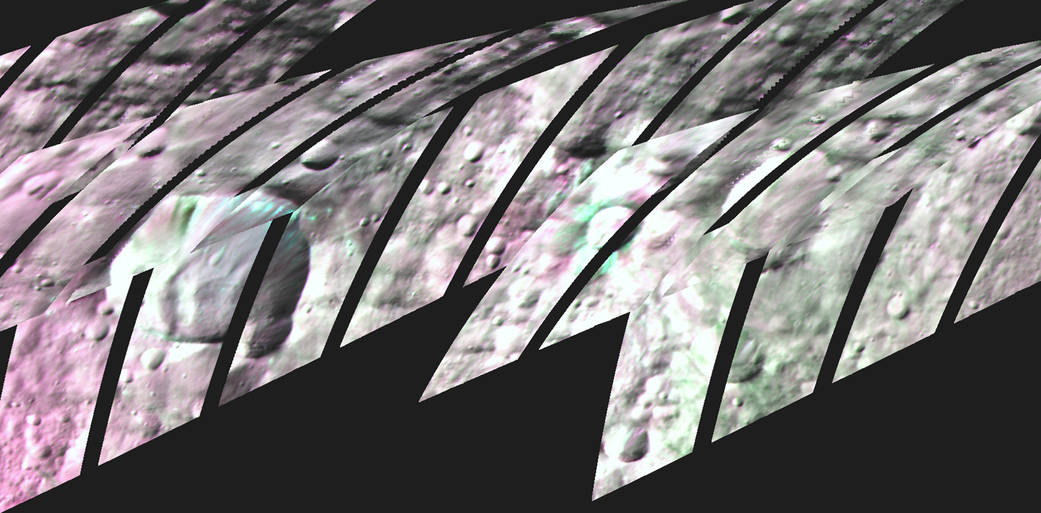This image shows infrared views of two craters at the giant asteroid Vesta that NASA’s Dawn mission has found to sport the mineral olivine. These craters, Bellicia (left) and Arruntia (right), are in the northern hemisphere, where Dawn scientists didn’t expect to find olivine.
If Vesta’s formation had followed the script for the formation of rocky planets like our own, heat from the interior would have created distinct, separated layers of rock (generally, a core, mantle and crust). In that story, the mineral olivine should concentrate in the mantle.
However, Dawn’s visible and infrared mapping spectrometer (VIR) did not find olivine at the huge craters in Vesta’s southern hemisphere that exposed Vesta’s mantle. Instead, scientists found signatures of olivine in the surface material in the northern hemisphere, at Bellicia and Arruntia craters.
These images were taken between June 15 and July 25, 2012, from an altitude of 420 miles (680 kilometers).
Scientists assigned red to the 1.25-micron range of the infrared radiation spectrum, green to the 1.93-micron range, and blue to the 1.64-micron range. Green areas show where Vesta’s surface is rich in olivine.
A contrast-enhanced version of the Bellicia image can be seen at PIA17477.
The Dawn mission to Vesta and Ceres is managed by the Jet Propulsion Laboratory, for NASA’s Science Mission Directorate, Washington, D.C. It is a project of the Discovery Program managed by NASA’s Marshall Space Flight Center, Huntsville, Ala. UCLA is responsible for overall Dawn mission science. Orbital Sciences Corporation of Dulles, Va., designed and built the Dawn spacecraft. The visible and infrared mapping spectrometer was provided by the Italian Space Agency and is managed by Italy’s National Institute for Astrophysics, Rome, in collaboration with Selex Galileo, where it was built.
Image credit: NASA/JPL-Caltech/UCLA/ASI/INAF



























